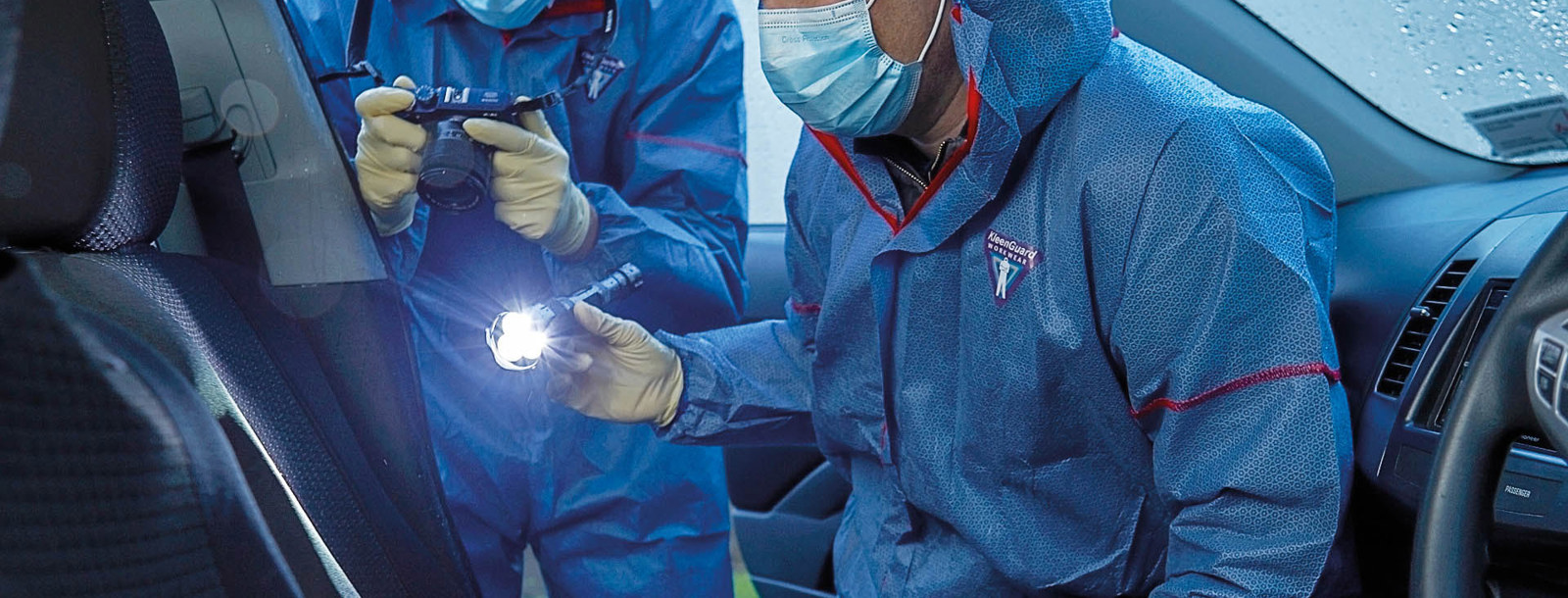Ngā tirohanga wāhi i tū tētahi taihara
Forensic scene investigations
ESR forensic scientists are specialists in examining crime scenes and are called on 24 hours a day, seven days a week to attend crime scenes, and detect and gather evidence.



About
ESR forensic scientists are specialists in examining crime scenes and are called on 24 hours a day, seven days a week to attend crime scenes, and detect and gather evidence.
ESR's scientists support the justice system to resolve cases like homicides, sexual assaults, and serious violent assaults by:
-
Detecting, collecting, and preserving forensic evidence including blood, fibres, impressions, glass, and fabric damage
-
Characterising evidence and interpreting the results through laboratory analysis
-
Reconstructing and representing events
-
Preparing reports and presenting evidence in court.
We also provide specialist consulting services relating to stolen vehicles, or vehicles involved in criminal matters. Our expertise covers the identification of vehicle occupants, number restorations, paint comparisons, and physical parts comparisons.
Our forensic laboratories are accredited by the ANSI National Accreditation Board (ANAB), in the field of forensic science testing, to the international standard of ISO/IEC 17025.
Physical evidence analysis
Physical evidence analysis
About
Our scientists can analyse substances such as glass, paint, fire debris and fibres which can provide crucial evidence in a case.
This kind of non-biological evidence can provide vital links between the victim, suspect and crime scene. We provide specialised investigation services in forensic examination and analysis to private investigators, lawyers and companies.
Glass fragments
Our specialised science techniques can help identify the possible source of glass particles. Using microscopic techniques for precise measurement of the refractive index of the smallest glass particles, our analysts can determine the possible origin of very tiny glass fragments and determine whether or not glass fragments on a suspect’s clothing could have come from a specific broken window.
Fibre analysis and comparisons
Our scientists apply specialised techniques to collect and identify transferred fibres, and compare them with suspected donor garments. Fibres can provide strong evidence of physical contact between persons in a wide variety of cases. ESR's experts can determine the thickness, colour, cross-sectional shape, optical properties and chemical composition of a single fibre.
Microanalysis
We offer a wide range of optical, instrumental and chemical techniques for the identification of trace evidence and possible source comparisons including glass, paint fragments, plaster, polymers and textile fibres.
Serial number restoration
Our specialists use sophisticated technology to restore the original serial numbers on car chassis, motorcycle frames, engine blocks and most metal surfaces.
Fire debris analysis
Our instrumental analysis of fire debris can detect hydrocarbon fuels (such as petrol, diesel) and solvents (such as methylated spirits, acetone). The analysis is extremely sensitive, detecting in the parts per million range and can help fire investigators determine whether an ignitable liquid was used to start a fire.
Footwear and tyre impressions
Our scientists can identify impressions as belonging to a shoe or tyre through matching class (pattern) and randomly acquired (damage) characteristics present on both the impression and shoe/tyre. They are experienced at preserving and/or recording impressions and enhancing faint impressions.
Firearms and toolmarks
ESR firearm investigation services include comparison of recovered projectiles and cartridges to identify the firearms that fired them; tracking of projectile trajectories; identifying residues associated with firing a firearm and estimating the distance between the firearm and target. Our toolmark investigation services include comparing toolmarks at the scene with tools recovered from suspects.
For more information
For more information please contact forensic@esr.cri.nz